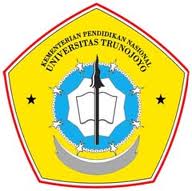Anda belum Log-in!
Silahkan Log in
Selamat Datang di Portal Digital Content Publisher
Minggu , 09 November 2025
Perpustakaan sebagai jantung pendidikan tinggi di Indonesia, harus mampu memberi kontribusi yang berarti bagi pelaksanaan proses belajar mengajar di perguruan tinggi.
di-posting oleh 160411100037 pada 2021-03-23 08:29:01 • 379 klik
PENERAPAN METODE IMPROVED RANDOM FOREST DAN ALGORITMA C4.5 SEBAGAI CLASSIFIER UNTUK MENDETEKSI RANSOMWARE BERDASARKAN FREKUENSI KEMUNCULAN API CALLS
APPLICATION OF IMPROVED RANDOM FOREST METHOD AND C4.5 ALGORITHM AS A CLASSIFIER TO DETECT RANSOMWARE BASED ON FREQUENCY OF API CALLS
disusun oleh M. ROZIN ANJAD
| Subyek: | Deteksi ransomware random forest malware |
| Kata Kunci: | Ransomware api call Improved Random forest C4.5 Algorithm |
[ Anotasi Abstrak ]
Teknik Signature base tidak dapat mengenali ransomware jenis baru tanpa di analisis terlebih dahulu. Untuk itu diperlukan teknik mendeteksi ransomware menggunakan machine learning. Penelitian ini bertujuan menerapkan metode improved random forest untuk mendeteksi ransomware. Improved Random forest merupakan Random forest yang dipakai menggunakan feature evaluator dan instance filter untuk meningkatkan akurasi dari random forest biasa. Penelitian ini akan menggunakan metode improved random forest dengan algoritma c4.5 sebagai classifier untuk mendeteksi ransomware. Pada penelitian ini ada beberapa tahap yang dilakukan untuk mendeteksi malware menggunakan improved random forest yaitu mengekstrak api calls, kemudian memilih fitur berdasarkan rasio kemunculan pada malware, melakukan fitur evaluator dan resampling kemudian mengklasifikasikannya. Fitur yang digunakan ialah API calls yang ada dalam malware berdasarkan frekuensi yang paling banyak muncul. Berdasarkan pengujian yang telah dilakukan, api call sebagai fitur sangat berpengaruh pada tingkat akurasi. Dimana improved random forest mampu mendeteksi ransomware dengan baik berdasarkan api calls sebagai fitur dan dengan akurasi sebesar 96%. Hal ini dikarenakan nilai rasio kemunculan yang digunakan kecil yaitu 0.02 sehingga fitur yang digunakan sebanyak 188 lebih baik
Deskripsi Lain
The signature base technique cannot identify new types of ransomware without first analyzing it. This requires a technique to detect ransomware using machine learning. This study aims to apply an improved random forest method to detect ransomware. Improved random forest is a random forest that is used using the evaluator feature and filter instances to increase the accuracy of the regular random forest. This study will use an improved random forest method with the c4.5 algorithm as a classifier to detect ransomware. In this study there are several steps taken to detect malware using an improved random forest, namely extracting api calls, then selecting features based on the appearance ratio of the malware, performing an evaluator and resampling feature and then classifying them. The feature used is the API calls in the malware based on the frequency that occurs the most. Based on the tests that have been done, the api call as a feature has a big effect on the level of accuracy. Where the improved random forest was able to properly detect ransomware based on api calls as a feature and with an accuracy of 96%. This is because the appearance ratio value used is small, namely 0.02, so the features used are 188 better
| Kontributor | : Dwi Kuswanto S.Pd., M.T;Husni S.Kom., M.Kom |
| Tanggal tercipta | : 2021-03-22 |
| Jenis(Tipe) | : Text |
| Bentuk(Format) | |
| Bahasa | : Indonesia |
| Pengenal(Identifier) | : TRUNOJOYO-Tugas Akhir-20727 |
| No Koleksi | : 160411100037 |
 Download File Penyerta (khusus anggota terdaftar)
Download File Penyerta (khusus anggota terdaftar) 1. TRUNOJOYO-Tugas Akhir-20727-abstract.pdf - 12 KB
1. TRUNOJOYO-Tugas Akhir-20727-abstract.pdf - 12 KB 2. TRUNOJOYO-Tugas Akhir-20727-coverfix.pdf - 437 KB
2. TRUNOJOYO-Tugas Akhir-20727-coverfix.pdf - 437 KB 3. TRUNOJOYO-Tugas Akhir-20727-chapter1.pdf - 20 KB
3. TRUNOJOYO-Tugas Akhir-20727-chapter1.pdf - 20 KB 4. TRUNOJOYO-Tugas Akhir-20727-chapter2.pdf - 417 KB
4. TRUNOJOYO-Tugas Akhir-20727-chapter2.pdf - 417 KB 5. TRUNOJOYO-Tugas Akhir-20727-chapter3.pdf - 422 KB
5. TRUNOJOYO-Tugas Akhir-20727-chapter3.pdf - 422 KB 6. TRUNOJOYO-Tugas Akhir-20727-chapter4.pdf - 115 KB
6. TRUNOJOYO-Tugas Akhir-20727-chapter4.pdf - 115 KB 7. TRUNOJOYO-Tugas Akhir-20727-conclusion.pdf - 6 KB
7. TRUNOJOYO-Tugas Akhir-20727-conclusion.pdf - 6 KB 8. TRUNOJOYO-Tugas Akhir-20727-reference.pdf - 128 KB
8. TRUNOJOYO-Tugas Akhir-20727-reference.pdf - 128 KB 9. TRUNOJOYO-Tugas Akhir-20727-appendices.pdf - 12 KB
9. TRUNOJOYO-Tugas Akhir-20727-appendices.pdf - 12 KB Dokumen sejenis...
Dokumen sejenis...Tidak ada !
 Dokumen yang bertautan...
Dokumen yang bertautan...- PENERAPAN METODE IMPROVED RANDOM FOREST DAN ALGORITMA C4.5 SEBAGAI CLASSIFIER UNTUK MENDETEKSI RANSOMWARE BERDASARKAN FREKUENSI KEMUNCULAN API CALLS
- IMPLEMENTASI METODE RANDOM FOREST DAN SELEKSI FITUR INFORMATION GAIN PADA KLASIFIKASI POTENSI PENYAKIT JANTUNG
- DETEKSI CYBERBULLYING PADA DATA TWEET MENGGUNAKAN METODE RANDOM FOREST DAN SELEKSI FITUR INFORMATION GAIN
- Analisis Sentimen Pada Ulasan Wisata Taman Adipura Sumenep Dengan Penerapan Metode Random Forest Dan Seleksi Fitur Information Gain
- Analisis Penggunaan Seleksi Fitur Forward Selection Untuk Masalah Waktu Komputasi Pada Metode Random Forest (Studi Kasus: Klasifikasi Harga Smartphone)
 Kembali ke Daftar
Kembali ke Daftar 